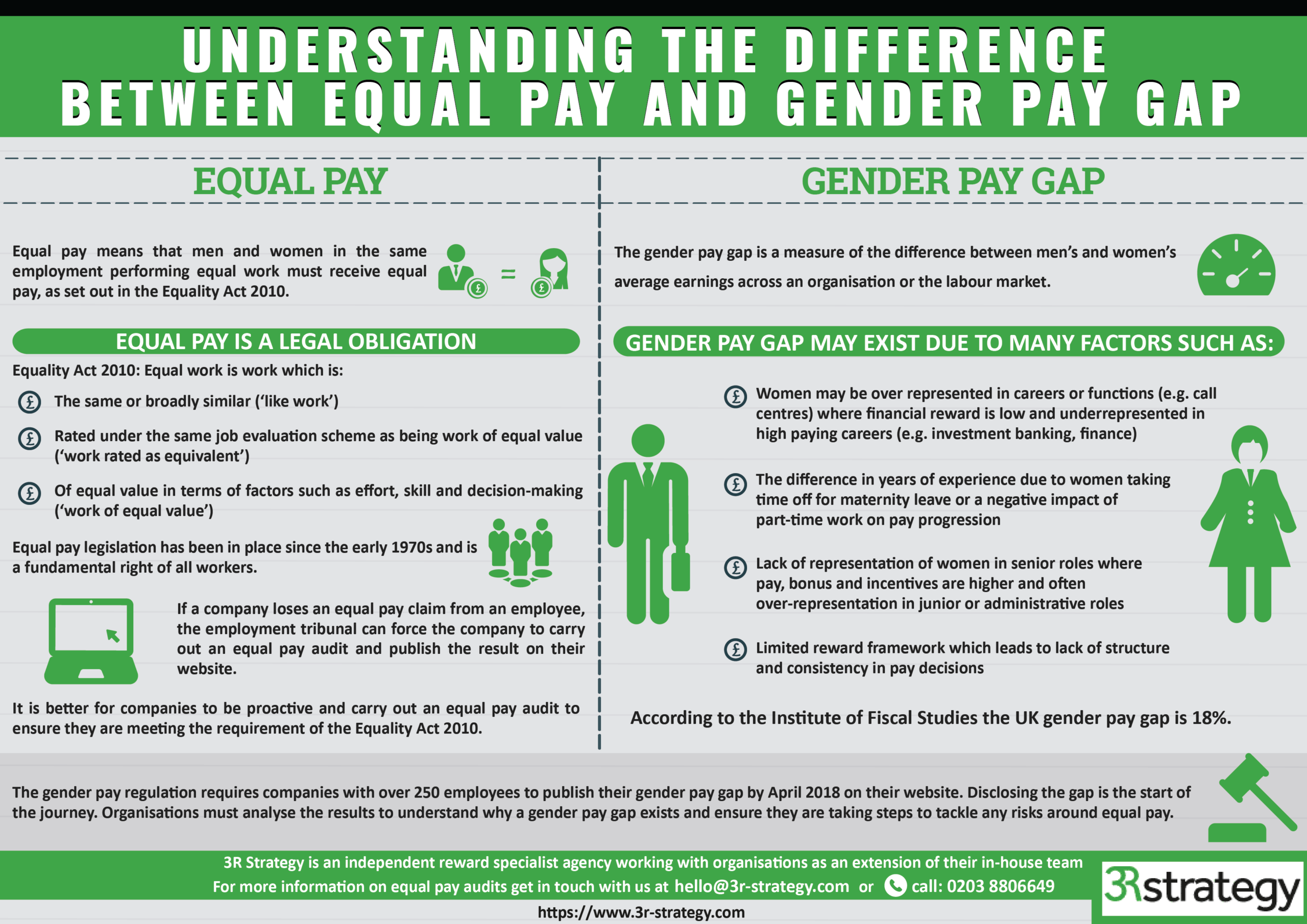Tackling the UK gender pay gap is a priority for many.
According to the Institute of Fiscal Studies, the UK gender pay gap is 18.1%. Although this may come across as men being paid 18.1% more than women for doing the same job, this is not the case. Pay may be one of the factors but the gender pay gap is primarily driven by factors such as:
- Lack of representation of women in senior roles where pay and bonuses are higher
- Overrepresentation of women in careers or functions (e.g. call centres) where the financial reward is lower compared to high-paying industries (e.g. investment banking) where they’re underrepresented
- The negative impact of part-time work on pay and career progression
While the new legislation requiring large organisations to publish their gender pay gap is helpful in highlighting the issue, achieving gender equality in the workplace requires a culture change.
Research shows that in many organisations, female employees struggle to juggle home caring responsibilities with work, so companies need to implement more work-life balance initiatives like flexible working. Organisations should be able to trust all their employees, men and women, to work to their own timetables and be judged on their output, not the number of hours spent in the office.
But the education on gender pay and gender equality needs to start even earlier. In response to the latest legislation, we produced an infographic outlining the differences between the gender pay gap and equal pay.
We were delighted that the infographic was used by an economics teacher, Monia Zahid, who used it during her upper sixth-form class at The Haberdashers’ Aske’s Boys’ School:
“The infographic led to a further discussion about other inequalities we hadn’t covered yet. Students benefited from seeing the relevant information presented in a way that’s easy to understand.”
“One of my students asked for guidance and so I shared the infographic with him. He used it to plan a very good information-sharing exercise.”
Starting these conversations in schools and universities with the next generation of employees will go a long way in shaping the cultures of our organisations in the future.
Conclusion
Tackling the UK gender pay gap means a change in culture.
Ultimately, diversity, gender or otherwise, is a product of a company’s culture. If we’re unable to create inclusive cultures based on trust and respect then we’ll struggle to achieve gender equality in the workplace and the number of women in senior leadership roles will remain too low.
The economic evidence speaks for itself: McKinsey’s diversity report from 2015 found that companies with gender-diverse leadership were 15% more likely to outperform financially compared with the industry average. Diverse organisations are also more likely to retain talent, boast high employee satisfaction and make better decisions.
As long as there’s room for improvement, we need to keep talking about equal pay and the gender pay gap.
Related Topics

